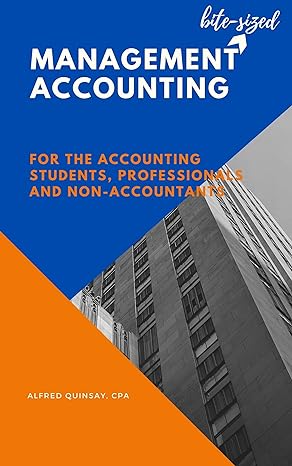Answered step by step
Verified Expert Solution
Question
1 Approved Answer
From its first day of operations to December 31, 2020, Flounder Corp. provided for uncollectible accounts receivable under the allowance method: 1. Entries for bad
From its first day of operations to December 31, 2020, Flounder Corp. provided for uncollectible accounts receivable under the allowance method: 1. Entries for bad debt expense were made monthly based on 2.0% of credit sales. 2. Bad debts that were written off were charged to the Allowance for Doubtful Accounts. 3. Recoveries of bad debts previously written off were credited to the allowance account. 4. No year-end adjustments were made to the allowance account. The balance in Allowance for Doubtful Accounts was $189,000 at January 1, 2020. During 2020, credit sales totalled $9.5 million, interim entries for bad debt expense were based on 2.0% of credit sales, $97,000 of bad debts were written off, and recoveries of accounts previously written off amounted to $17,000. Flounder upgraded its computer facility in November 2020, and an aging of accounts receivable was prepared for the first time as at December 31, 2020. Campbell's usual credit terms were net 30 days, and remain unchanged. A summary of the aging analysis follows: Classification by Month of Sale Balance in Each Category Estimated % Uncollectible November-December 2020 $1,100,000 6% July-October 2020 740,000 11.0% January-June 2020 485,000 20% Before January 1, 2020 131,000 60% $2,456,000 Based on a review of how collectible the accounts really are in the "Before January 1, 2020" aging category, additional receivables totalling $71,000 were written off as at December 31, 2020. The 60% uncollectible estimate therefore only applies to the remaining $60,000 in the category. Finally, beginning with the year ended December 31, 2020, Flounder adopted a new accounting method for estimating the allowance for doubtful accounts: it now uses the amount in the year-end aging analysis of accounts receivable. (a) Your answer is partially correct. Prepare a schedule that analyzes the changes in Allowance for Doubtful Accounts for the year ended December 31, 2020. (Hint: In calculating the allowance amount at December 31, 2020, subtract the $71,000 write off of receivables.) Balance at January 1, 2020 $189,000 Bad debt expense accrued in 2020 190,000 Recovery of bad debts in 2020 previously written off 17000 Write offs for 2020 (131000) Change in accounting estimate during 2020 58000 Balance at December 31, 2020 adjusted
Step by Step Solution
There are 3 Steps involved in it
Step: 1

Get Instant Access to Expert-Tailored Solutions
See step-by-step solutions with expert insights and AI powered tools for academic success
Step: 2

Step: 3

Ace Your Homework with AI
Get the answers you need in no time with our AI-driven, step-by-step assistance
Get Started


